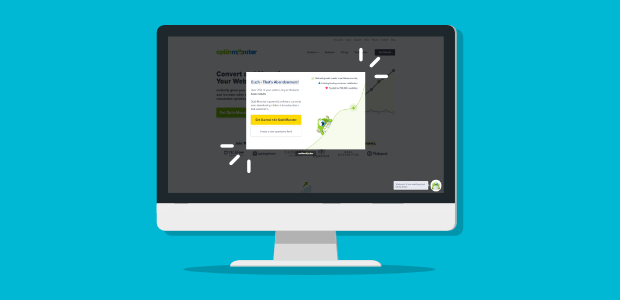Outbound marketing is reaching out to your potential customers to market your products/services. Outbound marketing is still very effective as it plays a role in complementing your marketing tactics.
What is Outbound Marketing?
Outbound marketing has been around for a long, long time and has impacted a lot of things over the years.
If we’re to be honest with ourselves, it hasn’t always been great.
It’s known more for its annoying push marketing tactics.
Yes!
I’m talking telemarketers, junk mail, and that delightful cold calling you are always fussing about.
Outbound marketing is basically any form of marketing that pushes products/services on you.
In most instances, these products/services don’t even attempt to be personal, are poorly timed, and definitely not relevant.
Here’s a simpler definition of outbound marketing.
It is about reaching out to your potential customers to market your products/services.
Until recently, it was the most effective form of marketing you could use and still is when utilized effectively.
Before the digital era took hold of the marketing industry, merchants couldn’t just sit back and wait for customers to come to them.
Marketers had to hawk their wares to make sales.
They also had to be louder and more aggressive to fair better than their competition.
These strategies enabled businesses to grab their target audience’s attention.

Examples of Outbound Marketing
The invention of mass media changed everything.
Companies turned to technology and other advertising forms like newspapers, television, and the radio to boost their brand awareness and generate more leads.
New trends are constantly emerging and companies strive to keep up with the ever-changing customer preferences.
Marketers also face immense pressure to meet those demands.
In this business environment, the audience has much more control over the content they can see and read.
Still, outbound marketing plays an integral role in your integrated marketing mix.

Here are some critical examples of outbound marketing forms to consider:
1. TV Commercials
It’s hard to believe that TV had, at some time, been considered “new” media.
However, as technology evolved, more effective marketing strategies were made available that focused on customer needs.
Still, there’s a high demand for TV ads and commercials.
After all, how could you explain businesses having to pay over $5 million for a single 30-second commercial in a 2020 Super Bowl?
2.Print Ads
You might probably be thinking, “these marketing tactics should be dead in the water by now.”
However, print ads can be highly successful and effective when applied at the right time and to the right audience.
This is particularly true for smaller businesses.
Print ads also don’t cost as much as they used to.
Especially if your target audience is the people in your community.
Don’t forget to consider print ads when developing your outbound marketing strategies.
3. Cold Calls
Cold calling still remains a viable and necessary part of outbound marketing.
As annoying as cold calls might be, it’s still necessary for businesses to make them since they help boost their ROI and brand visibility.
Sure, many people will hang up on you.
Others will say they’re not interested.
But you’ll also find a significant percentage who will actually be interested in what you have to offer and possibly become leads.
With the technology available today, businesses can make more calls in less time, making cold calls a much more effective outbound marketing tool.
4. Billboards

Advertising on billboards may also seem old-fashion to most people.
But a lot of companies still use them, and for a good reason.
Using billboards effectively for the best results requires a lot more creativity now more than ever.
However, you’ll need to be very creative to grab your audience’s attention.
Not only that, but you also want to hold their attention long enough to pass your message.
Fame Adlabs made a billboard advertisement for the movie “Day After Tomorrow.”

The billboard of the catastrophe movie was submerged in water, which was just ingenious.
It portrayed that apocalypse vibe that made you just want to keep looking!
If you can beat this type of billboard advertising, you can have many eyeballs rolling your way.
Examples of Internet Outbound Marketing
Most marketing that doesn’t utilize digital media falls in the outbound marketing category.
For instance, TV commercials, radio spots, and ads in the newspaper all play a significant role in promoting your brand.
However, there are also several cases and examples of internet outbound marketing to consider exploring. These include:
1. Popups

If you’re looking to gain more traffic to your website, then popup ads are what you need.
Over time, popup ads have evolved and become reconceptualized to be effective to brands.
As they become less irritating to consumers, popups are now intelligently created and used to increase your brand’s reach.
2. YouTube Video Ads

Video has established itself as one of the most informative and engaging forms of marketing for 2020 and well into 2022.
Video platforms like YouTube let users upload videos and determine the audience to target.
YouTube also lets users determine the best video content your ad runs before using them in your outbound marketing campaign.
It’s one of the most effective and cost-efficient outbound marketing tactics to use in your marketing strategies.
3. Junk Emails
The good old email blasts still work.
In fact, email use is still growing at an exponential rate, despite the social media onslaught.
With the right email marketing strategies, you can quickly create targeted emails and send them fast to your targeted audience.

When sending email blasts to your leads, it helps to offer some kind of offer like a one-time discount to entice your audience to engage with your message.
4. Social Media Ads

With over 3.6 billion people using social media today, you would be wise to want in on the action.
It’s hard to go wrong with good social media marketing these days.
Just a little creativity in your social media advertising, and you should be on top of your competition.
Do your research to ensure your social media channel is best suited for your audience.
Push those ads out to your target audience and the virtual world and see your brand grow.
Difference Between Outbound and Inbound Marketing

The difference between outbound and inbound marketing boils down to finding the right audience and knowing which marketing strategy to use.
When you create content that your prospects enjoy and find informative, they’ll want to see and interact with it.
It doesn’t really matter whether you force that content on them (outbound marketing) or they search for it (inbound marketing).
Pull Vs Push
If you create helpful and engaging content that your ideal customers search for, you will have successfully pulled them into your business.
That’s inbound marketing at its best.
The inbound marketing approach demands brands to create content that addresses topics and queries prospects are already searching for.
Outbound marketing is the complete opposite of that.
Here, you’ll have to develop content, assuming that it will capture your audiences’ interest.
However, since they neither searched nor asked for it, you will have to push it to them through advertising.
You can think of it as someone taking a blind shot.
By any luck, your shot might just hit the target.
This lets you reach out to people who will take an interest in your “pushed” advertisements, discovering your brand or message in the process.

Permissive Vs Interruptive
People use search engines to find solutions to their problems or the right answers to their questions.
Each time online users do this, they are simultaneously permitting search engines to provide them with the most relevant information to their queries.
This same pattern also plays out with your email marketing strategies, such as newsletters.
When someone signs up to receive your newsletters, they’re basically permitting you to send them personalized emails.
This inbound permissive approach helps brands to create and distribute personalized content to prospects.
In contrast, outbound marketing takes a more interruptive approach.
When watching your favorite TV show or listening to a radio program, do you ever pause to ask the media to throw in an ad or two?
Nobody does!
Still, that’s exactly what you get; continuous interruptions of your favorite shows with advertising.
Marketers still use this outbound marketing approach to capture their target audiences’ attention online.
Most times, people skip them.
But other times, an ad may pop up that captures your attention.
You will probably click it to learn more about it.
Again, when executed with the right strategy, inbound and outbound marketing are extremely effective!
Outbound Marketing in 2022
Have you ever clicked on a social media advertisement just to learn more about its products/services?
Probably YES!
Outbound marketing is still very effective and crucial in the digital marketing space.
Suppose you are a new business that’s looking to build awareness, it’s vital that you use outbound marketing strategies to get your products/services to your target audience.
Outbound marketing can be successful when it’s applied effectively, in front of the right people, and on a larger scale.
Perfect timing and conveying the right information to the right audience also play a critical role in the success of your marketing campaign.
Outbound marketing can only be effective when it’s:
Personalized
The main reason why most traditional outbound marketing strategies fail because they entail the use of impersonal, disruptive messaging.
The best strategy to take here is to provide your audience with personalized and relevant messages that your audience doesn’t find disruptive.
Efficient
As one of the best strategies in this situation, you should get your message out to the right customers.
You must also create highly optimized content that your audience finds informative and highly engaging to boost your marketing campaigns.
Cost-Effective
The time for expensive outbound marketing budgets is long past.
Not to say that you shouldn’t spend money on your digital marketing campaigns.
However, you should be strategic about how you invest in your digital outbound marketing strategies and make them exceptionally cost-effective.
Strategic
In 2022, it will be among the fastest ways to make your company competitive.
However, outbound marketing costs money and time.
Therefore, in order to see significant returns, you must be smart in your outbound marketing tactics.
Combining Outbound Marketing Strategies with Digital Marketing
The key to successfully combining outbound marketing with digital marketing strategies is simple.
You just need to look for places in your outbound campaigns that are targeted to your customers’ buying journey to find where you can incorporate a digital marketing touchpoint.
Here’s what you need to do:
Personalize Your Messages in Cold Emails
What’s shocking with cold emails is that almost 90% of those messages aren’t always personalized.
As a business, you must know that recruiting is all about relationships and building connections with your customers.
Although personalization can be time-consuming, it’s crucial in building trust with your prospects and possible conversions.
This involves trying to include more than just your prospect’s first name.
Simply introduce yourself to show your prospects who you are as a brand and company.
Use Direct Mail Marketing
Lead scoring is another essential feature to track your customers’ actions as they interact with the marketing ecosystem.
Sending your prospects personalized, highly targeted direct mails improve your prospects’ chances of engaging with your emails.
Besides brand awareness, your audience will find your direct mail pieces to be relevant and highly informative.
This improves their chances of engaging and interacting with your emails.
Use gated downloads to capture your leads’ emails and webhooks to trigger posts mail sends whenever your prospects visit specific pages on your website.
Implement Search and Social Media Ads
There are many ways these marketing strategies go hand in hand.
You can leverage these two channels in such a way that they complement each other to boost your site visits and drive sales.
Neil Patel recommends using a single medium like Twitter to discover the most effective headlines, then using that information to decide which is the best headline to use for your social media post.
This optimization method is always a good tactic and is an effective way to drive traffic to your site even as you wait for your digital marketing tactics to kick off.
Referral Rock’s Jay Kang said, “We mostly focus on SEO and creating new content based on keywords we are trying to rank for as well as targeting user intent.”
Finding the right keyword and identifying keyword intent can be tricky.
Luckily, BiQ’s Keyword Intelligence is perfect for that.
BiQ’s Keyword Intelligence allows its users to know the searcher’s intent when looking for content marketing.
With this tool, you can find the estimated keyword intent percentages to determine which keywords are the most effective.
For example, you want to know the searchers’ intent behind “content marketing.”
Type the term into the keyword tool.
The results will then show you the estimated keyword intent percentages based on the number of total related keywords.
As the keyword “content marketing” has an informational intent behind it, you can create content ads based on that keyword.
BiQ’s Keyword Intelligence feature eliminates all assumptions and guesswork to help you identify your searcher’s intent.
Conclusion
While inbound marketing may be at the forefront of content marketing, outbound marketing still plays a critical role in complementing your marketing tactics.
If you are struggling to achieve your goals using inbound marketing only, you can try the suggested outbound marketing tactics mentioned above and see how it works for you!




